Podcast : glossary definition | Habefast

Podcast : definition, formats and value in communication
Podcasts refer to audio content published online and available on demand.
This format is similar to radio shows (sometimes including video) and is most often organized into series of episodes. Listeners can tune in at any time, either via live streaming or by downloading episodes for offline listening.
Usually free, podcasts are available on a wide range of platforms and apps (Apple Podcasts, Spotify, Google Podcasts, etc.), and can be accessed with nothing more than a smartphone or computer. In essence, a podcast is an on-demand show that you can listen to whenever and wherever you want.
Beyond their ease of access, podcasts also stand out for their personal and engaging nature. Each creator builds a unique universe and editorial voice, often defined by a recurring tone, format, and personality. This direct connection with the audience fosters a sense of proximity and trust, based on consistency and authenticity.
As such, podcasts have become a particularly effective media for content strategies, brand communication, and influencer marketing.
They allow companies to share their expertise, tell their story, or collaborate with creators to reach targeted communities in a more intimate and lasting way than through more traditional or short-lived formats.
Thinking about launching a podcast for your business? Our content creation agency supports you from concept to production — format design, content strategy, audio recording, and video capture — with the help of our audiovisual studio, LakeProd.

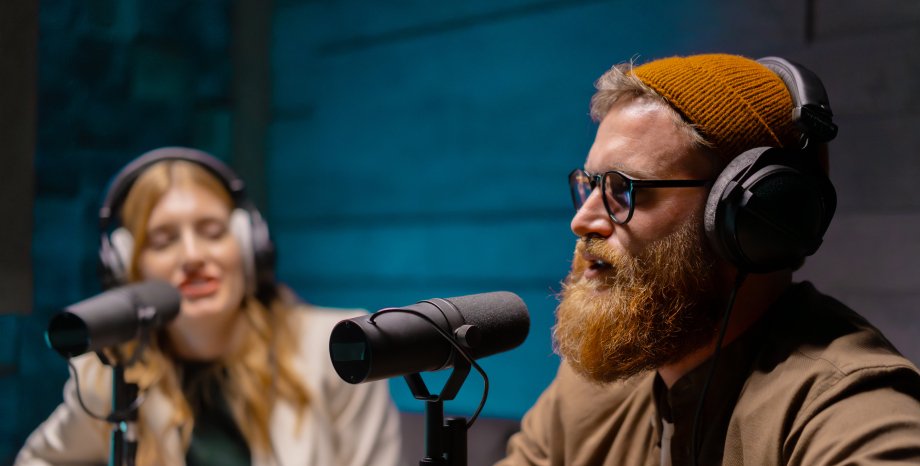
Podcast : variety of formats and content
Podcasts are characterized by a wide range of formats, which explains why there’s something to suit every taste and listening habit.
Among the most common formats are:
Interview podcast
A host invites one or more guests for a conversation around a specific theme. This is one of the most widespread formats, ranging from intimate interviews with public figures to expert roundtables.
Conversational podcast
Two or more hosts engage in a spontaneous discussion. The tone is friendly and informal — like a conversation between friends — which creates a sense of closeness with the listener. With multiple voices, this format brings energy and diverse perspectives.
Narrative podcast
This type of podcast leans toward storytelling. Some are true audio documentaries or investigative series spread over several episodes (such as true crime or history podcasts). Others focus on audio fiction (serial dramas, theatrical stories) with actors and sound effects, recreating the atmosphere of radio theater. Whether based on real events or fictional, narrative podcasts immerse the listener in a carefully crafted story.
Educational podcast
The goal here is to share knowledge, simplify complex topics, or train the listener on a specific subject. This includes language learning, personal development tips, and scientific explanations.
Monologues and commentary
These are solo podcasts where one person — the host — speaks, often in the form of commentary, press reviews, or personal storytelling. The success of this format largely depends on the host’s charisma and expertise in holding the audience’s attention.
Of course, these formats are not mutually exclusive — many podcasts use a hybrid approach, blending storytelling with interviews, or alternating between conversation and documentary segments.
This freedom of tone and structure is a defining feature of podcasts, far removed from the rigid codes of traditional radio.
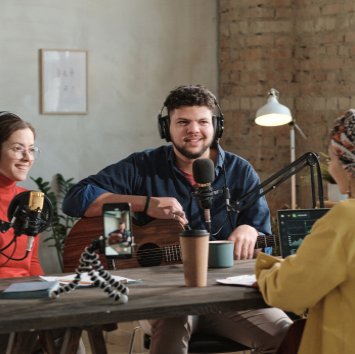


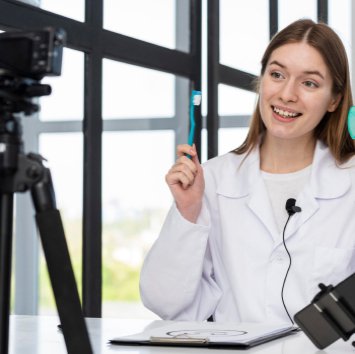
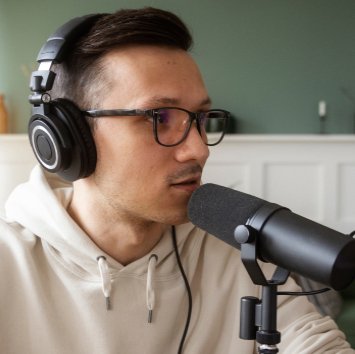
Practical Advantages of Podcasts
Podcasts are designed for on-the-go listening.
Most streaming platforms allow users to listen anywhere — and it’s largely this flexibility that explains the growing popularity of the format.
Unlike linear media such as radio or television, the listener decides when and where to tune in. This makes podcasts perfectly suited to modern, mobile lifestyles: people can listen while driving, commuting, exercising, or doing household tasks. Just plug in your headphones and turn any moment of the day into productive listening time.
Democratization of Podcast Production
Recording a podcast doesn’t require a professional studio — a decent microphone, a headphone, and a laptop are often enough.
One of the main reasons for the podcast boom is its ease of creation.
Unlike traditional radio, you don’t need to be a sound engineer to get started. With some basic equipment and a bit of know-how, anyone can become a creator.
In fact, many podcast creators start out with modest setups — even a smartphone can be enough for initial recordings. Free, user-friendly audio editing software makes it possible to produce a polished result without a big budget.
This democratization of audio production has truly opened the mic to new voices. Since the mid-2000s, the rise of online distribution and the near-zero cost of publication has led to a surge in “amateur” podcasts on niche topics. Creating a podcast is now as simple and accessible as starting a blog.
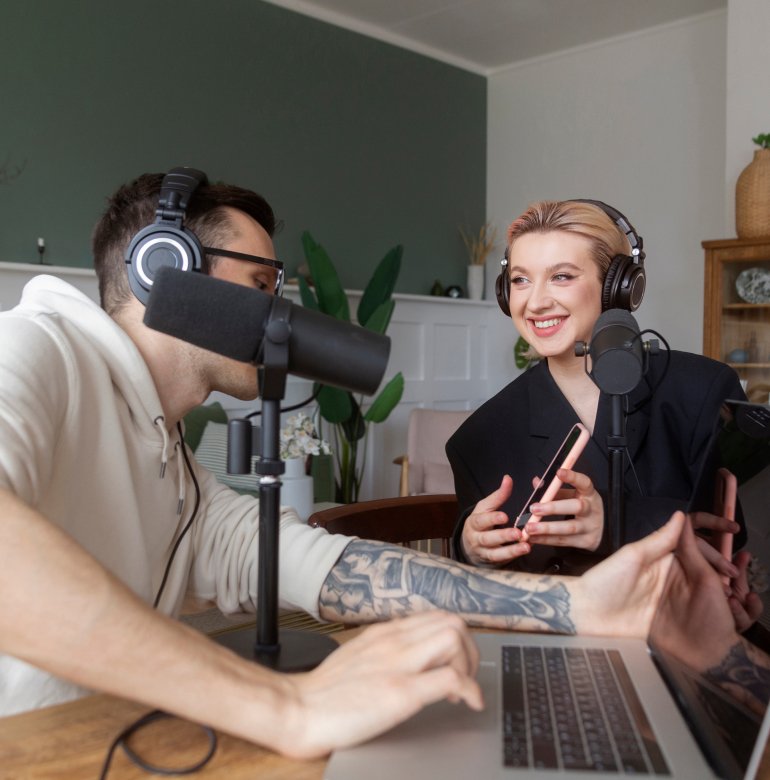
The Rise of Video Podcasts and the Role of Influencers
In recent years, we’ve seen the podcast format evolve with the emergence of video podcasts — a hybrid approach gaining popularity.
These podcasts are recorded in both audio and video, then shared on platforms like YouTube or broadcast live on social media. This allows viewers to watch the hosts and guests in the studio, adding a visual dimension to the listening experience.
A trending example is Guillaume Play’s interview podcast LEGEND, which gives a voice to people with extraordinary life stories to share.
The success of this format reflects shifting audience habits, especially among younger demographics. Many content creators and influencers have embraced podcasting as a way to diversify their content.
Often, they film the podcast recording and post the full version on YouTube, while also distributing the audio across standard podcast platforms. This dual-format approach helps them reach a wider audience: some fans prefer watching the discussion, while others enjoy listening in the background.
From a brand and business perspective, video podcasts offer new communication opportunities.
A filmed show, distributed on social media, can drive more engagement (through comments, shares, and reactions) than audio alone.
Visually, brands can showcase their visual identity, feature products or team members, and reinforce their image in a dynamic way.
Marketing and Communication Uses of Podcasts
Beyond entertainment and mainstream information, podcasts have become a valuable marketing and communication tool for brands, organizations, and even individuals (in personal branding).
The podcast provides an intimate and engaging space for expression — ideal for building long-term relationships with a targeted audience.
For businesses, launching a branded podcast allows them to develop a narrative around their values, share expertise or stories related to their sector, and connect without relying on traditional advertising. It’s a non-intrusive format: the audience chooses to listen, which means higher attention and receptiveness.
One major advantage of podcasting for brand communication is audience loyalty. By releasing regular episodes, a brand can establish a recurring appointment with its listeners. When the content is high-quality and valuable — offering advice, inspiring stories, or expert insights — listeners are more likely to subscribe, return, and develop a bond with the brand. This is often referred to as audio community building.
For external marketing (targeting customers, boosting visibility, or engaging a community), podcasts have proven to be a strategic medium. Their authentic tone and the sense of proximity they create make them ideal for building trust and long-term loyalty.

In an age of advertising saturation, podcasting offers a less commercial, more narrative and high-value format that resonates with modern audiences — making it a powerful asset in today’s communication mix.
